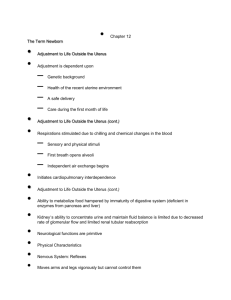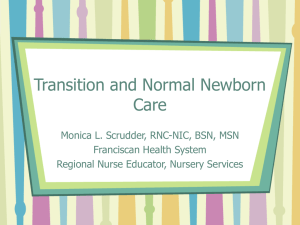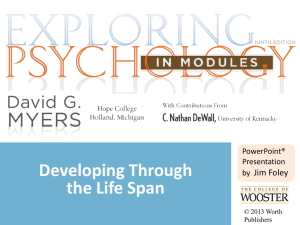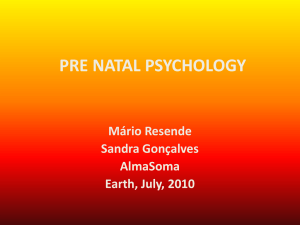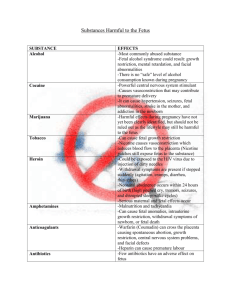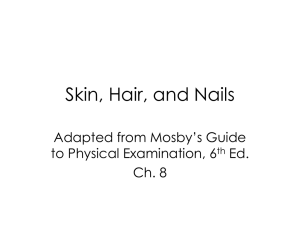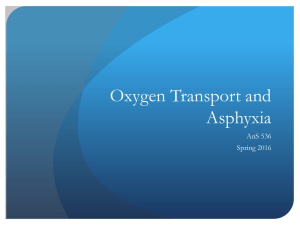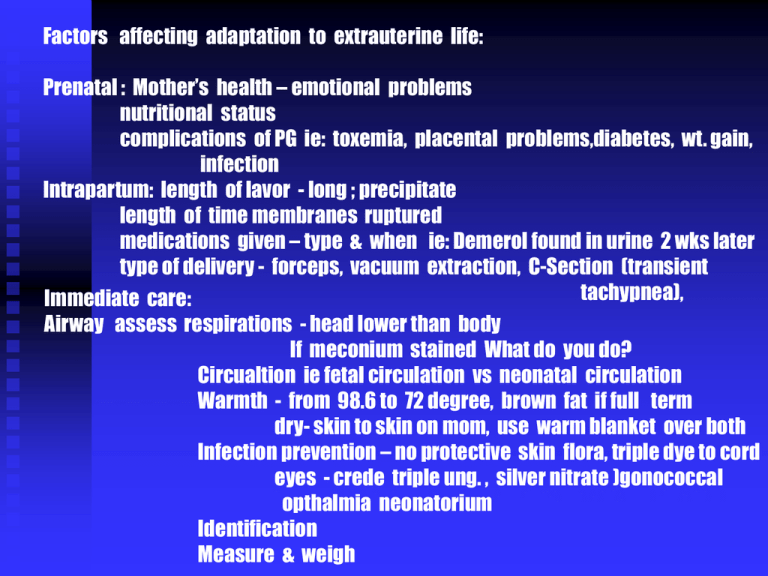
Factors affecting adaptation to extrauterine life:
Prenatal : Mother’s health – emotional problems
nutritional status
complications of PG ie: toxemia, placental problems,diabetes, wt. gain,
infection
Intrapartum: length of lavor - long ; precipitate
length of time membranes ruptured
medications given – type & when ie: Demerol found in urine 2 wks later
type of delivery - forceps, vacuum extraction, C-Section (transient
tachypnea),
Immediate care:
Airway assess respirations - head lower than body
If meconium stained What do you do?
Circualtion ie fetal circulation vs neonatal circulation
Warmth - from 98.6 to 72 degree, brown fat if full term
dry- skin to skin on mom, use warm blanket over both
Infection prevention – no protective skin flora, triple dye to cord
eyes - crede triple ung. , silver nitrate )gonococcal
opthalmia neonatorium
Identification
Measure & weigh
APGAR:
1 & 5 MINUTES
7 – 10 = normal newborn
4 – 6 moderately depressed
may need ventilation
support KEEP WARM
0 – 3 or 4 severely depress.
endotracheal intubation,
inflation of lungs with O2
use of cardiac
stumulantes
correction of metabolic
acidlosis &
hypoglycemia KEEP WARM
Chest circumference =
Or 2 cm less than head
Interaction
of stimuli
in initiation
of neonatal
respiration
Neonates are
NOSE breathers
Shallow & respirations
are irregular
30-60, apnea less
Than 15 seconds
Heart sounds: remember closures are functional NOT
permanent.
Blood pressure 78/42 often drops to 62/40 first hours of life
Varies day to day first month, crying will increase BP
Blood volume 10% greater than adults, 20-30% increase in
RBC, decrease of 20% plasma. Late cord clamping may
Increase blood volume as much as 40-60%.
80-110ml.
RBC’s = 5 to 5.8, decrease to 4.2-5.2 by end of first month
Hemoglobin at birth 80% = fetal hemoglobin BUT fetal
hemoglobin has shorter life span, by 5 weeks only 5%.
15-18g/100cc. What is norm adult?
12-16
WBC = 18,000 at birth, 23-24,000 first day, 11,500 afterf
first few days.
Platelets – essentially same as adult exception those that took
aspirin
Blood groups established early in fetal life, but become even
more pronounce after birth
IMPERFORATED ANUS
Renal system: void 12-24 hours.
Immature kidneys; therefore, decrease ability to excrete meds =
buildup, toxicity.
40% of body weight = ECF; therefore more susceptible to fluid
& electrolyte imbalance.
Void 6-10 / day. I & O = weigh diapers, 1gm = 1cc
GI: intestines sterile, VITAMIN K ?
Stomach holds 15cc at birth, by second day up to 2-3 oz.
Right side placement for best digestion
Stools difference between breast and formula fed
Wt. Lose 5 – 10% of body loss
Hypoglycemia can compromise CNS, brain dependent
on glucose, increase RDS.
S&S: tremors, cyanosis, seizures, apnea, irregular resp.
hi-pitched weak cry, hypothermia, poor feeding
BS falls rapidly – stabilizes at 6-12 hours after birth
Increase demand due to metabolic energy because:
establish respirations
increase muscular activity
maintenance thermoregulations
Increase incidence:
preterm (decrease glycogen stores)
IUGR
cold stressed
perinatal stress, asphyxia
`
IDM – insulin dependent mother
RH incompatibility
Physiologic hyperbilirubinemia or NORMAL jaundice
In 50% term, 80-90% of preterm
Icterus Neonatorum = jaundice of the newborn
If noted before 24hours of age – breakdown started in utero
usually RH or ABO incompatibility or infection
See usually 48-72 hours after birth
Visible in nose at 3mg, face at 5mg, chest 7mg, abd 10my
legs 12mg, palms at 20mg.
Hypoglycemia, hypothermia, apshaxia cause acidosis, which
increase fatty acid, this decreases albumin binding of bilirubin
since fatty acids bind with albumin.
Cephalhemotma or bruising will increase jaundice WHY??
Kernicterus = most serious complication
Psudomenstration = female
Swelling of breast = either sex
Smegma = either sex, from sebaceous glands
white cheesy secretions
Acrocyanosis
Mongolian Spot
LANUGO
Molding
Bilateral Cephalhematoma
Desquamation
Nevus Flammeus
Port Wine Stain - permanent
not elevated; 3:1000 newborns
doesn’t blanch with pressure
or Nevus simplex or angel kiss
Red pigment, blanches with pressure
Fades in 1-3 years. Often at nape of neck, forehead
occiput, eyelid or nose.
Strawberry hemangioma or Nevus vasculosus
1 – 3 % born with another 10% develop within 1-4 wks.
These may continue to grow but then disappear by school
age. Usually do not take off surgically unless on eyelid
or lips & interferes with everyday life
Milia
Erythema Toxicum or Newborn Rash
candidias
Candida albicans - thrush
Dermatitis
Neuromuscular:
CNS is immature only some nerves are mylinated; therefore,
movement is uncoordinated
Brain is growing fast requires glucose and O2
Newborn shows remarkable sensory development, ability for
self organization and social interaction
Transient tremors& uncoordinated movement are normal
BUT if more severe check glucose level
REFLEXES check for absence, lag of response or most VIP SYMETRY
Absence, lag or asymmetrical response can be due to neuro (CNS) damage,
injury, retardation or severe prematurity.
TONIC NECK
STEPPING OR
DANCING REFLEX
GRASP
BABINISKI
MORO REFLEX - WITH SUDDEN MOVEMENT OR
CHANGE OF EQUILIBRIUM
STARTLE - WITH SUDDEN LOUD SOUND
GRASP
Rooting




